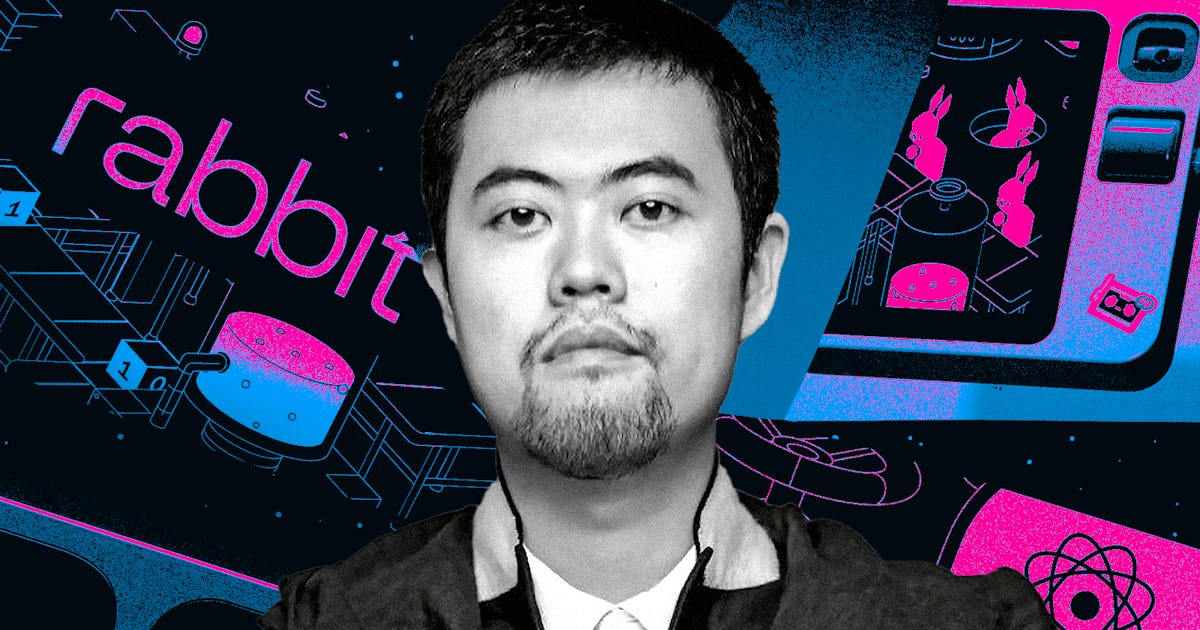Exclusive: Inside the Rise of Jesse Lyu and the Rabbit R1

🌈 Abstract
The article provides an in-depth look at Jesse Lyu, the founder and CEO of Rabbit Inc., and the company's new AI gadget called the R1. It covers Lyu's background and journey in the tech industry, the development and design process of the R1, and how it compares to the competition like Humane's Ai Pin. The article also discusses Rabbit's approach to AI, security, and the company's plans for the future.
🙋 Q&A
[01] Inside the Rise of Jesse Lyu and the Rabbit R1
1. What was Jesse Lyu's background and journey in the tech industry prior to founding Rabbit?
- Lyu had a lifelong passion for technology and gadgets, starting from playing video games in arcades as a child in China to learning programming and building apps during his time at the University of Liverpool.
- After graduating, Lyu co-founded several startups, including a "social calendar network" called Time Meet, before pivoting to focus on building an AI assistant like J.A.R.V.I.S. from the Iron Man movies.
- Lyu's previous company, Raven, worked on conversational AI and natural language processing, even predating Amazon's Alexa. He later partnered with Baidu to create the Raven H smart speaker.
2. How did Lyu and Rabbit approach the design and development of the R1 AI gadget?
- Lyu had a clear vision for the R1 - a "Tamagotchi-Pokédex-walkie-talkie" device that would make AI fun and accessible.
- The hardware design process was surprisingly fast, taking only 10 minutes to sketch out the essential components with Teenage Engineering, a design partner Lyu had worked with before.
- Rabbit was able to move quickly on the R1 development due to Lyu's prior experience in the hardware industry and connections in the supply chain.
3. How does the Rabbit R1 compare to the competition, like Humane's Ai Pin?
- The R1 is positioned as a complementary device to smartphones, not a replacement, unlike the Ai Pin's initial goal.
- Lyu believes Humane made the mistake of trying to emulate Apple's approach as a new startup, while Rabbit focused on "de-risking" the hardware and providing a polished end-user experience.
- Rabbit is also taking a different approach to the software, keeping the R1's operating system closed to maintain quality control, rather than licensing it out like Humane.
[02] The Real Work Begins Now
1. What are some of the key challenges and priorities for Rabbit as they move forward with the R1?
- Rabbit is a small team of only 45 people, so they have to prioritize which features to add first, like alarms which were not included in the initial release.
- Listening to customer feedback and continuously improving the R1's capabilities through software updates is a top priority for Lyu and the team.
- Ensuring the AI's trustworthiness, security, and privacy are also major concerns that Rabbit is actively addressing.
2. What is Rabbit's overall strategy and vision for the future?
- Lyu believes that as application systems on smartphones are "dying," AI-powered devices like the R1 will become more essential for quickly accomplishing tasks and saving time.
- Rabbit is focused on moving fast, iterating quickly, and building a strong community around the R1 to drive its future development.
- While open-source competitors like Open Interpreter's 01 Light exist, Lyu believes Rabbit's approach of maintaining tight control over the hardware and software experience is key to delivering the best user experience.